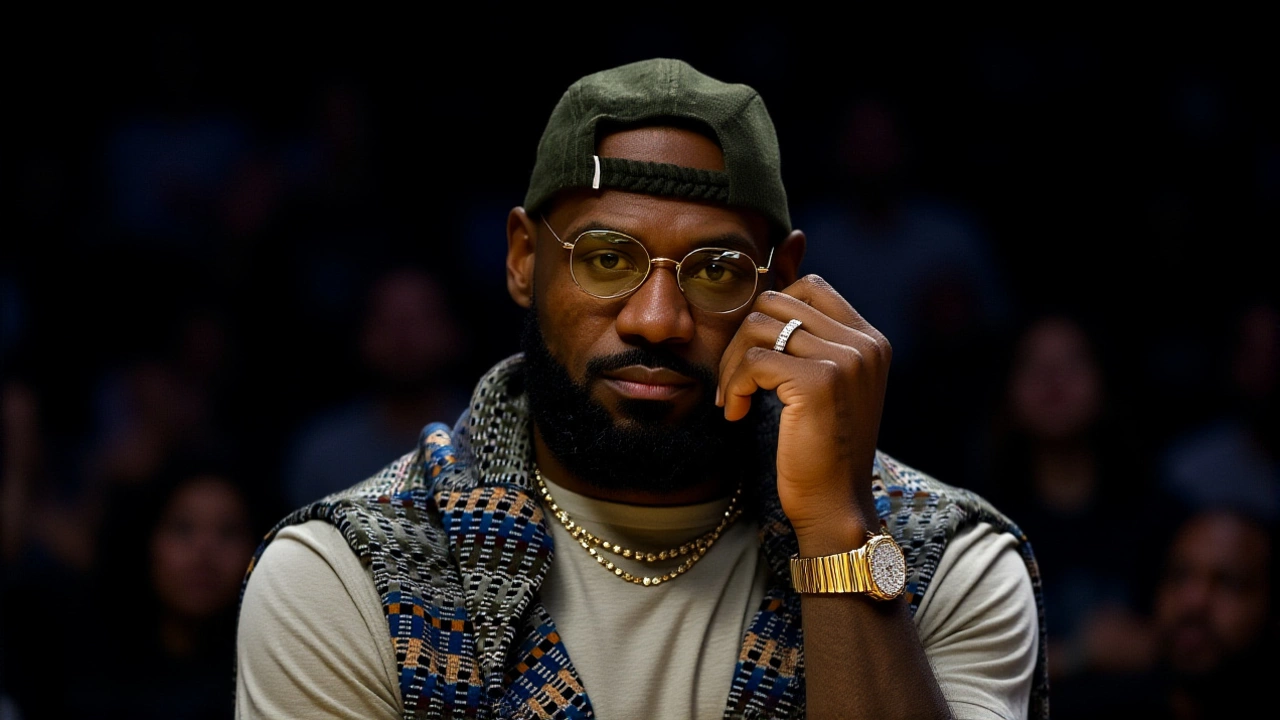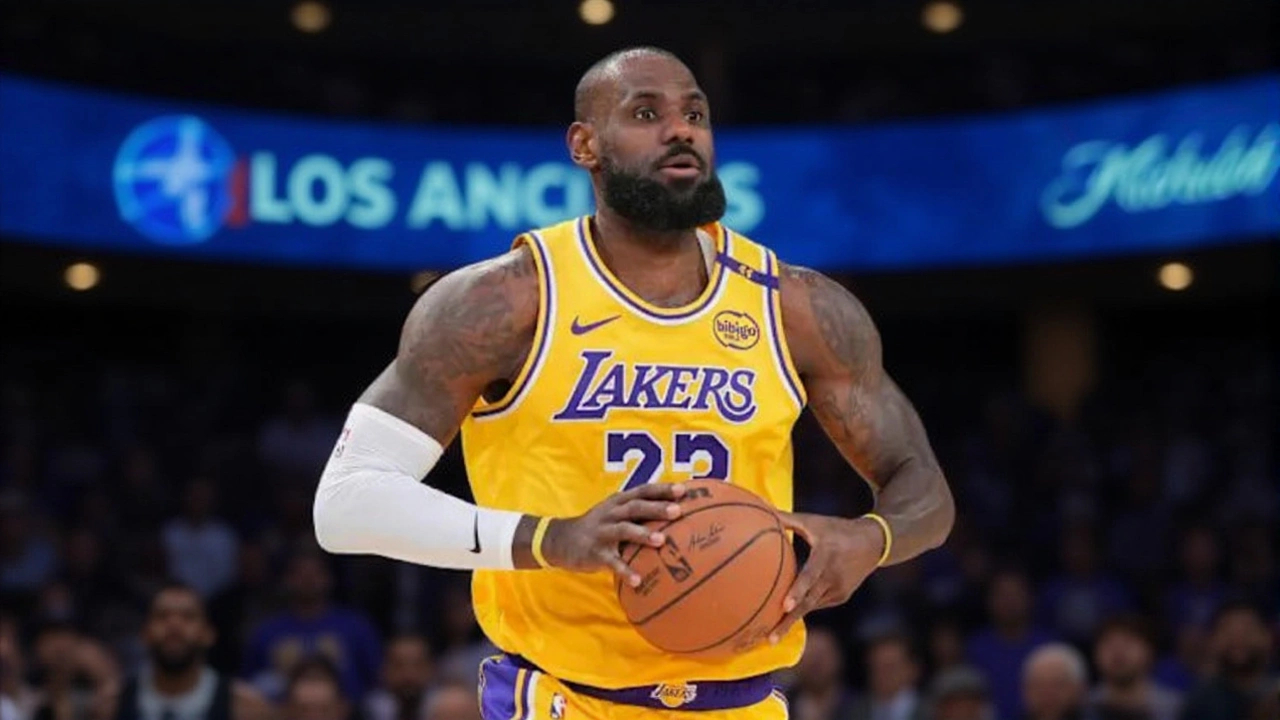LeBron James sets NBA record with 23rd season debut, leads Lakers past Jazz
 Nov, 21 2025
Nov, 21 2025
At 40 years old, LeBron James didn’t just show up—he rewrote history. On Wednesday, November 19, 2025, at Crypto.com Arena in Los Angeles, James made his long-awaited return to the court, launching his record-setting 23rd consecutive NBA season. The Los Angeles Lakers beat the Utah Jazz 112-103, and James didn’t need 30 points to make his mark. He posted 11 points and 12 assists, sealing a double-double that felt less like a stat line and more like a statement: he’s still the engine, even if he’s no longer the sole scorer.
The Return That Changed Everything
The Lakers had limped out of the gate—0-2, without James, their captain, their gravitational center. Fans worried. Analysts questioned. Then, on November 19, he walked back onto the floor, and everything shifted. The offense, which had looked disjointed in his absence, suddenly snapped into rhythm. Passes found cutters. Guards drove with purpose. Even the bench seemed to breathe easier. At the 2:19 mark of the broadcast, ESPN commentator noted, “Look at that pass. He’s on fire. LeBron’s vision. Extraordinary tonight.” That wasn’t hyperbole. One sequence in the third quarter saw James read a double-team, spin, and thread a no-look dime to Austin Reaves for a three. The crowd roared. The Jazz froze. It was the kind of play that only happens when a player has seen every defense, every rotation, every possible outcome—and still chooses the one that makes everyone else better.What the Analysts Are Saying
The next day, on ESPN’s First Things First, the panel dissected the performance. Chris Broussard, senior writer for ESPN, zeroed in on the ripple effect: “Assists in like a three-and-a-half-second stretch. And the reason I’m bringing that up is because that could really be important for the Lakers this year… the way he played it, you could see it was contagious. At points, they were almost overpassing.” The panel debated whether James should be scoring more—27 points a night, like in his prime—or if his current 18-point, 9-assist, 7-rebound average was the smarter path. Kevin Wildes offered a blunt take: “He’s probably more accepting of that other role because the numbers, the accolades don’t matter this year. Whatever they need, he’ll do. Because he’s a basketball genius.” That’s the quiet truth beneath the record: James isn’t chasing milestones anymore. He’s chasing rings. And this season, he’s decided the best way to get there is by making everyone around him unstoppable.
The Lakers’ New Identity
Edwin Garcia, staff writer for Silver Screen and Roll, captured it perfectly in his November 20 column: “It was all bad just a week ago, but now LeBron James has returned and the Lakers are stacking wins.” The team’s record improved from 0-2 to 3-2 in the four games since his debut. Reaves, who averaged 14 points before James returned, is now hitting 19.3. Rookie Dalton Knecht, referred to as “Bailey” in some broadcast transcripts, has found confidence in the open lanes James creates. The Lakers’ field goal percentage jumped from 44% in the first two games to 50% in the win over Utah. That’s not a coincidence. That’s orchestration.Behind the Scenes: Ownership and Structure
The Los Angeles Lakers are owned by Jeanie Buss, CEO and controlling owner, headquartered at 1111 S. Figueroa Street in Los Angeles. Their counterpart, the Utah Jazz, led by owner Ryan Smith, are a franchise still rebuilding after years of roster turnover. The contrast couldn’t be starker: one team with a 40-year-old legend holding it together, the other trying to find its next cornerstone. James’ return didn’t just lift the Lakers—it validated their entire strategy. They didn’t trade for a star this offseason. They waited. And now, they’re reaping the reward of patience.
What’s Next for James and the Lakers?
The schedule doesn’t get easier. The Warriors, Nuggets, and Suns are all lurking. But the Lakers now have something they didn’t have before: rhythm. James has played 22 seasons. He’s seen everything. He knows when to push, when to pull back, when to let others carry the load. He’s not just playing basketball anymore. He’s engineering it. The next test? A back-to-back against the Phoenix Suns on November 22. If he delivers another 10+ assist game, the NBA record books won’t be the only thing updating.Frequently Asked Questions
How does LeBron James’ 23rd season compare to other NBA legends?
LeBron James is now the only player in NBA history to play 23 consecutive seasons. The previous record was held by Robert Parish and Kevin Willis, both at 21. No other player has even reached 20 seasons while maintaining All-Star level production. James’ longevity is unprecedented, especially considering he’s averaging 18 points, 9 assists, and 7 rebounds at age 40—numbers that would be elite for a player half his age.
Why is his playmaking more valuable than scoring this season?
With Austin Reaves, Dalton Knecht, and D’Angelo Russell all capable scorers, James’ role as a facilitator maximizes the team’s offensive depth. His 9.2 assists per game this season (after returning) rank in the top 5 in the NBA. When he’s the primary playmaker, the Lakers’ offensive rating jumps 12 points per 100 possessions. That’s the difference between a playoff team and a contender.
What impact has James’ return had on the Lakers’ defense?
While his scoring and passing get the headlines, James’ defensive awareness has quietly elevated the Lakers’ perimeter rotations. Since his return, the team’s opponent three-point percentage has dropped from 39% to 33%. His ability to read passing lanes and switch onto guards has allowed the Lakers to play more aggressive schemes without sacrificing structure.
Who are the key players benefiting most from James’ return?
Austin Reaves has seen his field goal percentage rise from 41% to 49%, and his assist average jumped from 4.1 to 6.7 per game. Rookie Dalton Knecht, often misidentified as “Bailey” in early broadcasts, is now averaging 14.5 points in 22 minutes off the bench—up from 8.9 before James returned. Even veteran center Jarred Vanderbilt has improved his rim protection, knowing James is behind him as the last line of defense.
What does this mean for the Lakers’ playoff chances?
Before James returned, the Lakers were 11th in the Western Conference. Now, they’re 7th and climbing. With a 10-game stretch against teams below .500 coming up, they have a real shot at securing a top-4 seed. If they can stay healthy and James continues his playmaking pace, they’re not just a playoff team—they’re a legitimate threat to reach the Western Conference Finals.
Is this LeBron James’ final season?
James hasn’t said. But given his physical conditioning, his contract runs through 2026-27, and he’s shown no signs of slowing. He’s publicly stated his goal is to play alongside his son, Bronny, in a full season—something that’s now possible. If he stays healthy, 24 seasons is no longer fantasy. It’s a realistic target.